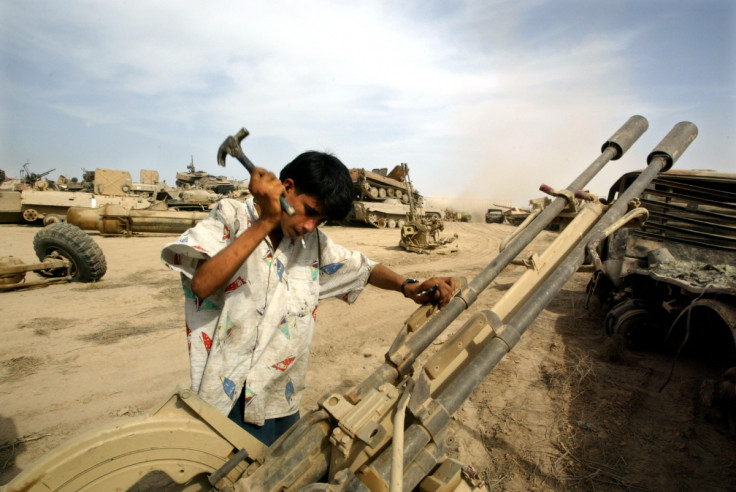Iraq 2003 War: US Use of Depleted Uranium in Civilian Areas Revealed

US forces used depleted uranium (DU) in civilian areas during the war in 2003 that exposed Iraqi civilians and workers to exposure to radioactive and toxic heavy metal years after the war.
For the first time since the war ended, coordinates from the Dutch Ministry of Defence showing where US aicraft fired DU weapons against targets have been released by Dutch peace organisation Pax via Freedom of Information Act. The data shows that DU weapons were used in or near populated areas of Iraq - Samawah, Nasiriyah and Basrah - and at least 1,500 rounds were fired against opposition ground troops.
The US and UK have maintained that DU, which was deemed legal by a memo 1975, is only for use against armoured vehicles. "This [DU weapons use against troops] is particularly interesting as DU was specifically designed as an anti-armour munition," said the report.
A legal review by the US Air Force stated that
For reasons related to the prohibitions against unnecessary suffering and poison,
the following specific restriction on use should be adopted for this munition. 'This
munition [DU] is designed for use against tanks, armoured personnel carriers or other hard
objects. Use of this munition solely against personnel is prohibited if alternative
weapons are available
Depleted uranium, which is a by-product of uranium enrichment, is a chemically toxic and radioactive heavy metal that was developed for use in armour-piercing munitions by the US. It is categorised as intermediate level radioactive waste.
Exposure to DU - which can occur under different circumstances such as by inhaling, ingesting or entering it through wounds - can lead to an increased risk of developing different types of cancer. International organisations such as WHO state that "young children could receive greater depleted uranium exposure when playing within a conflict zone because of hand-to-mouth activity that could result in high depleted uranium ingestion from contaminated soil".
Pax estimated that more than 440,000kg of DU was fired in Iraq in both Gulf Wars in 1991 and 2003 by the US and the UK armed forces.
The author of the report, Wim Zwijnenburg, said that US Air Force should not have used DU weapons in populated areas, knowing the harm that could be done by toxic weapons. The organisation estimates that the cost for cleaning-up the more than 300 known contaminated sites is estimated to be between US$30-45m, placing a significant burden on the Iraqi government.
Data on GPS coordinates of DU rounds were handed over by the US to the Dutch ministry of defence, which was concerned about areas in which its troops were stationed last year. The ministry of defence then released the data to Pax in response to a request under freedom of information law.
© Copyright IBTimes 2025. All rights reserved.






















